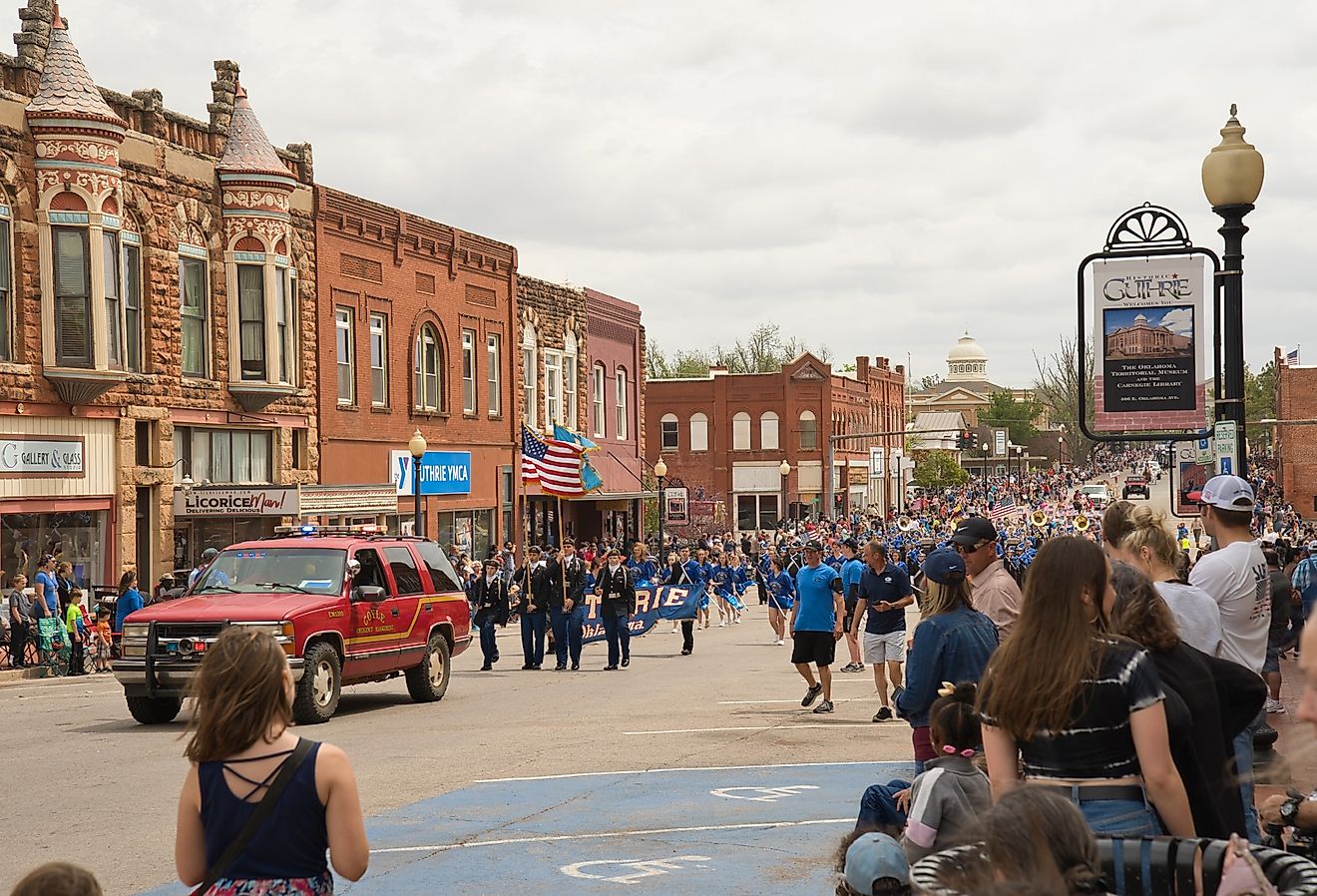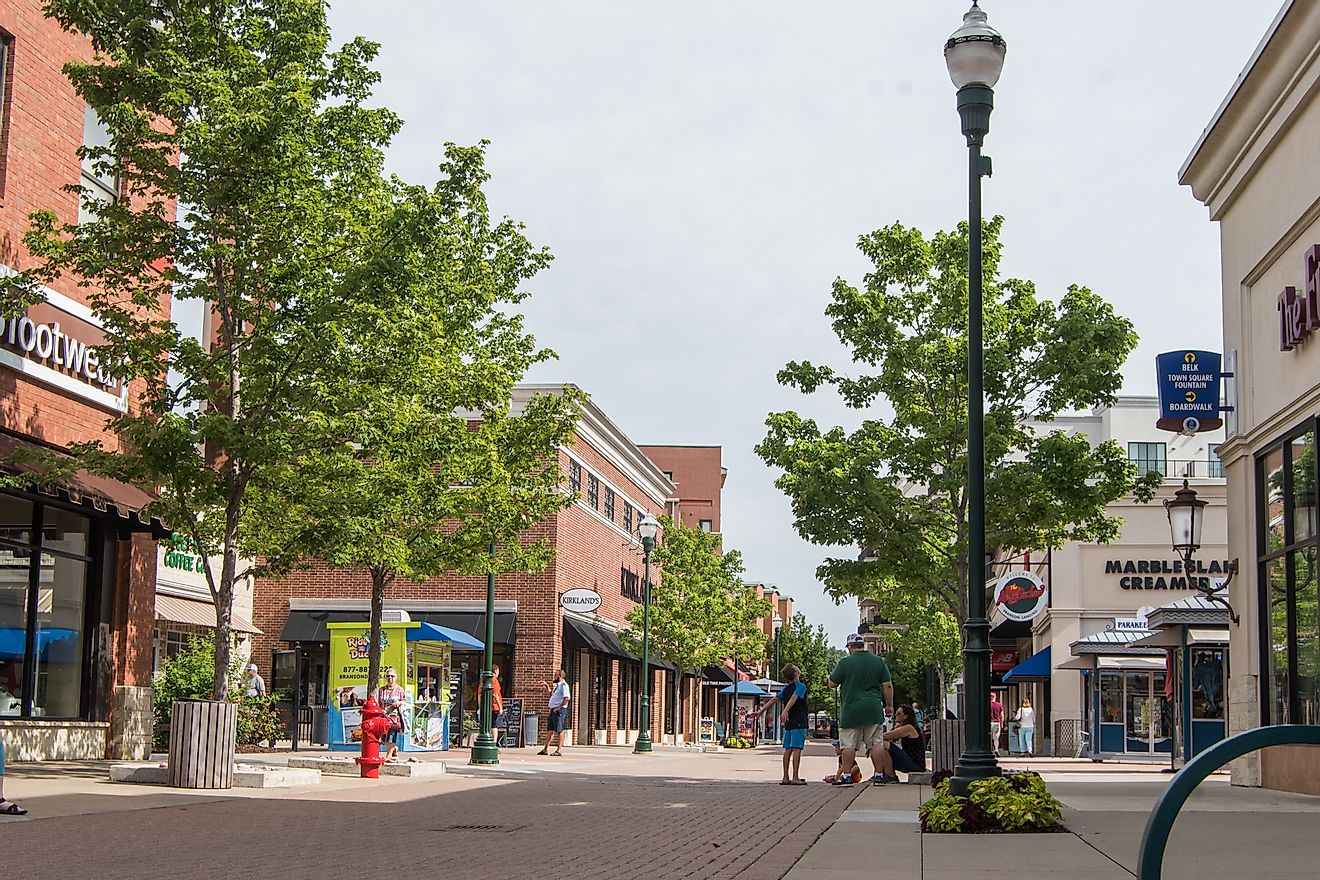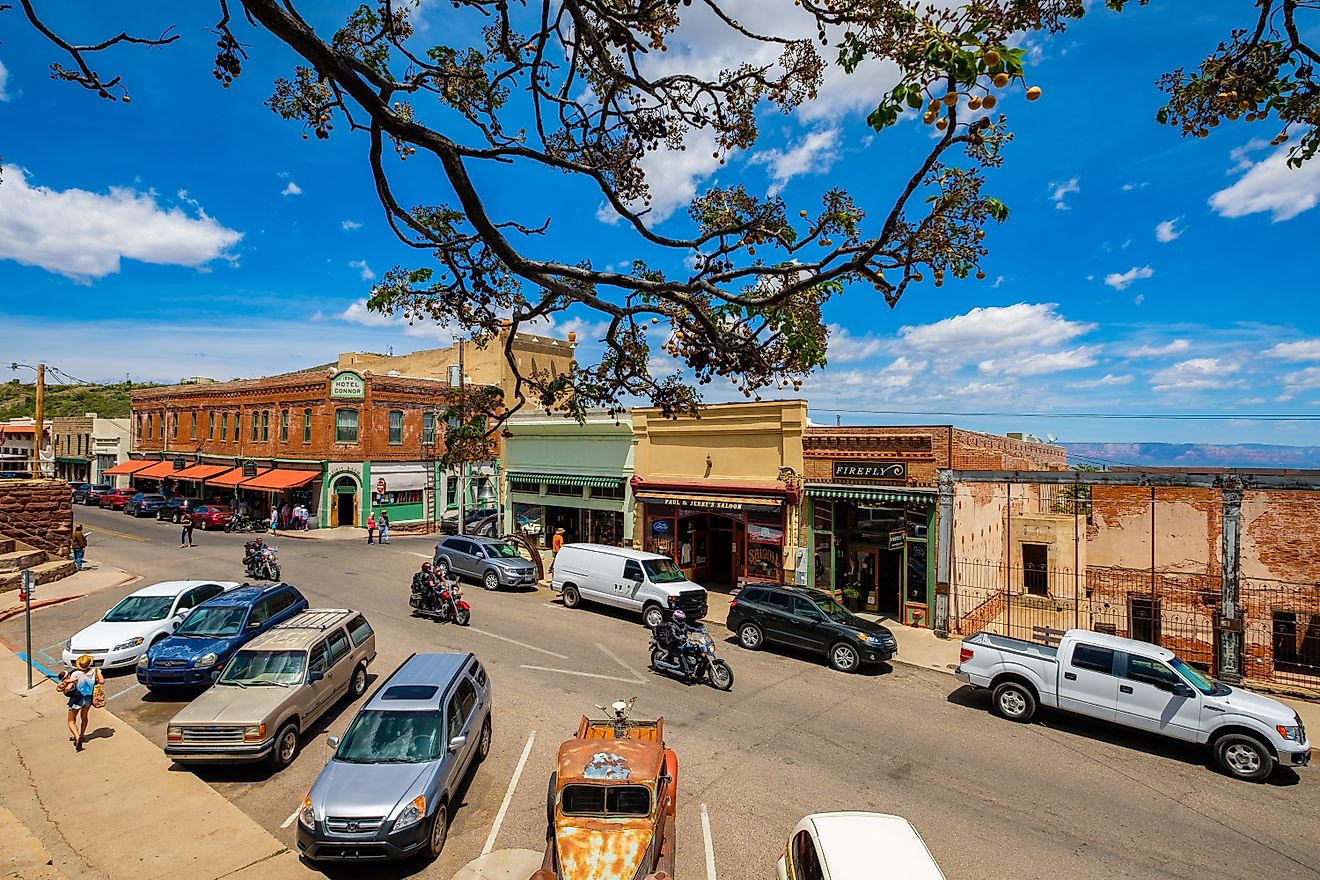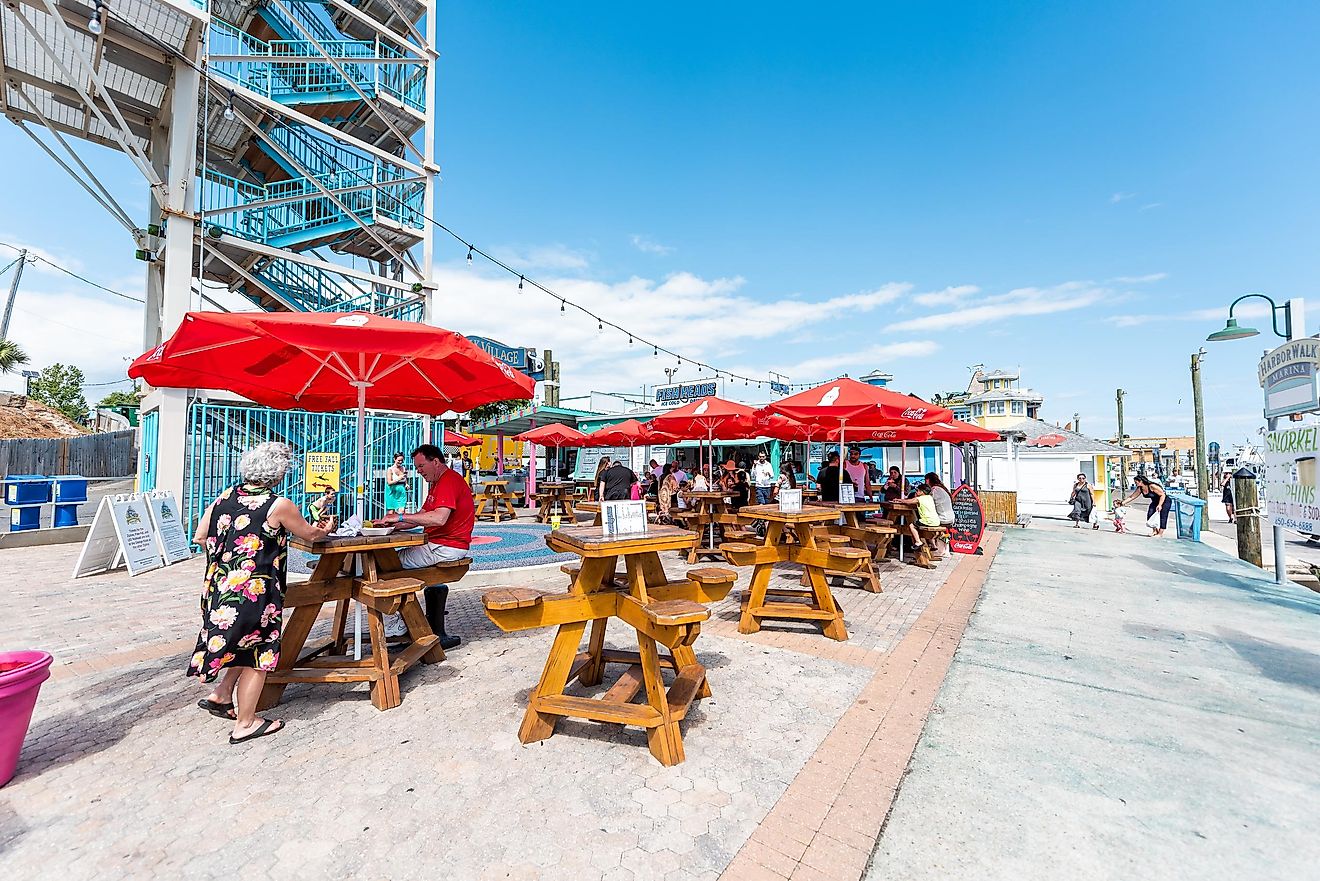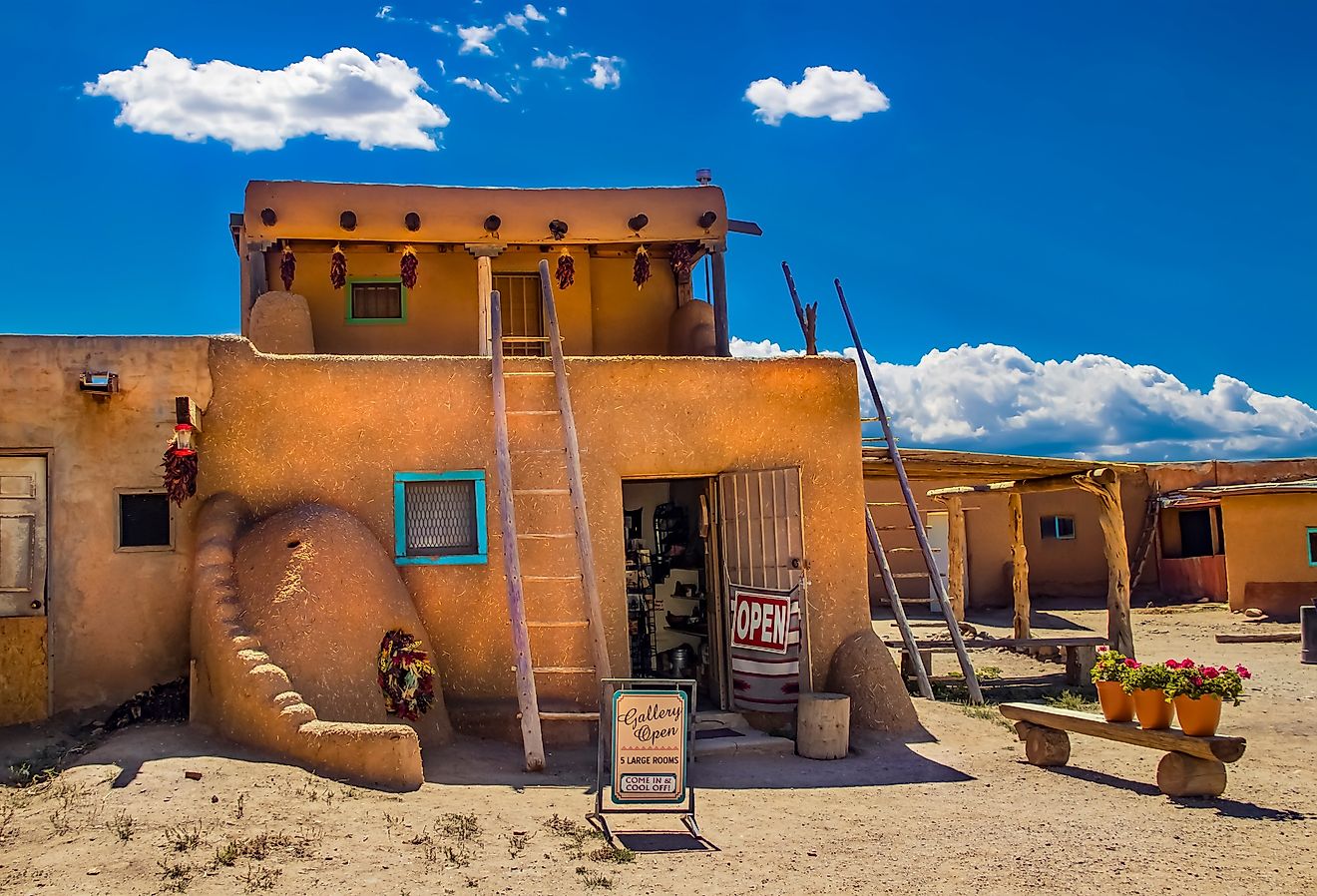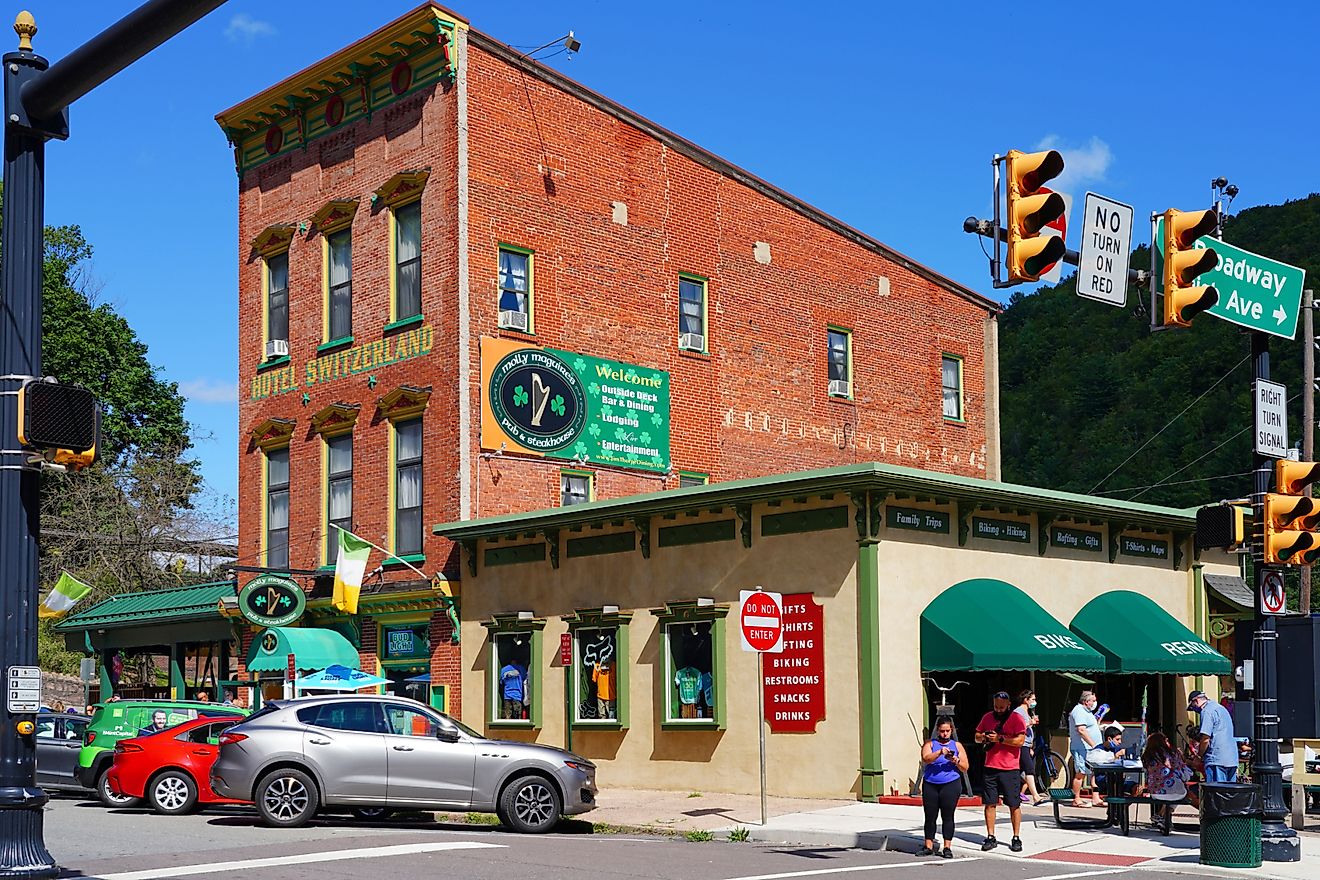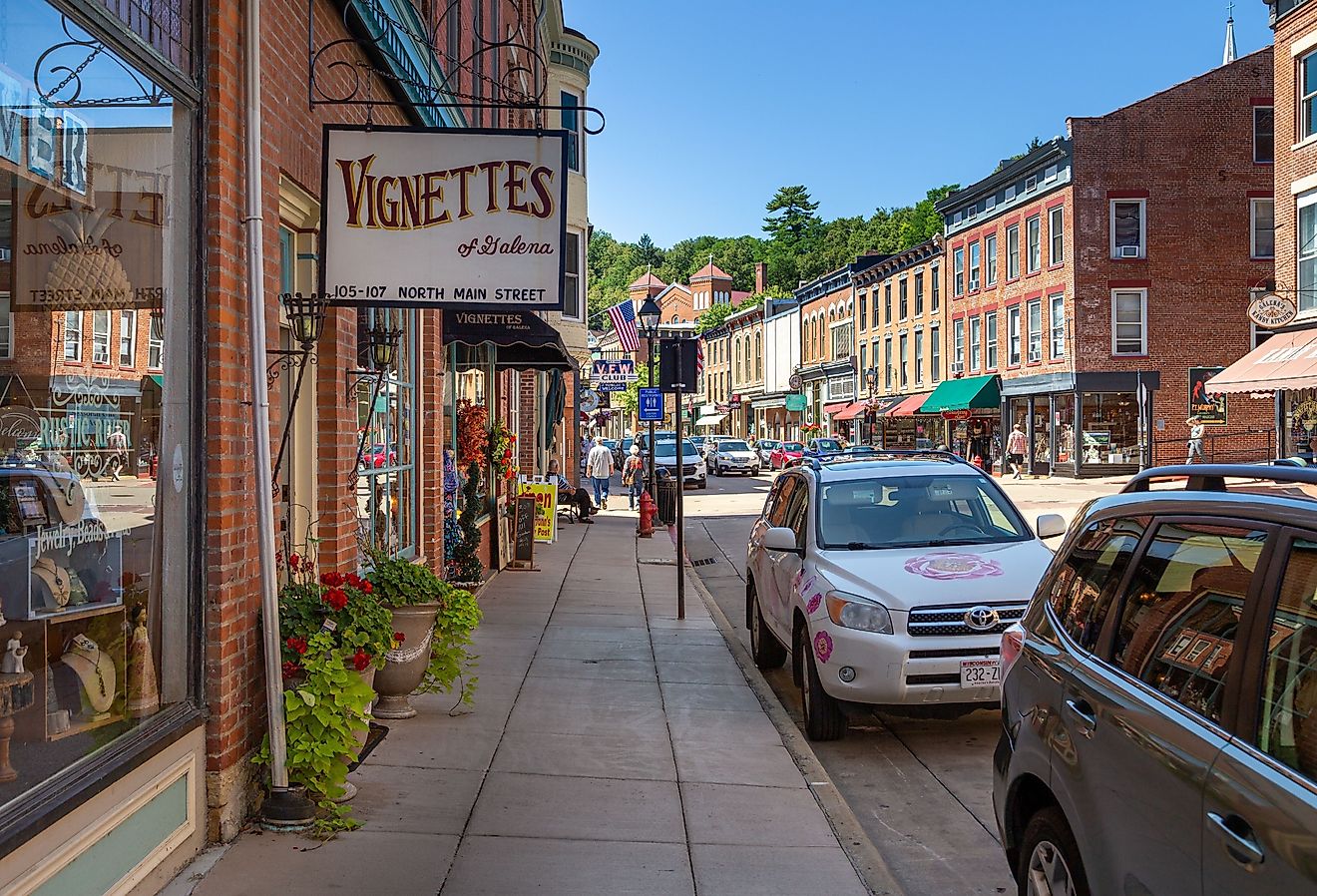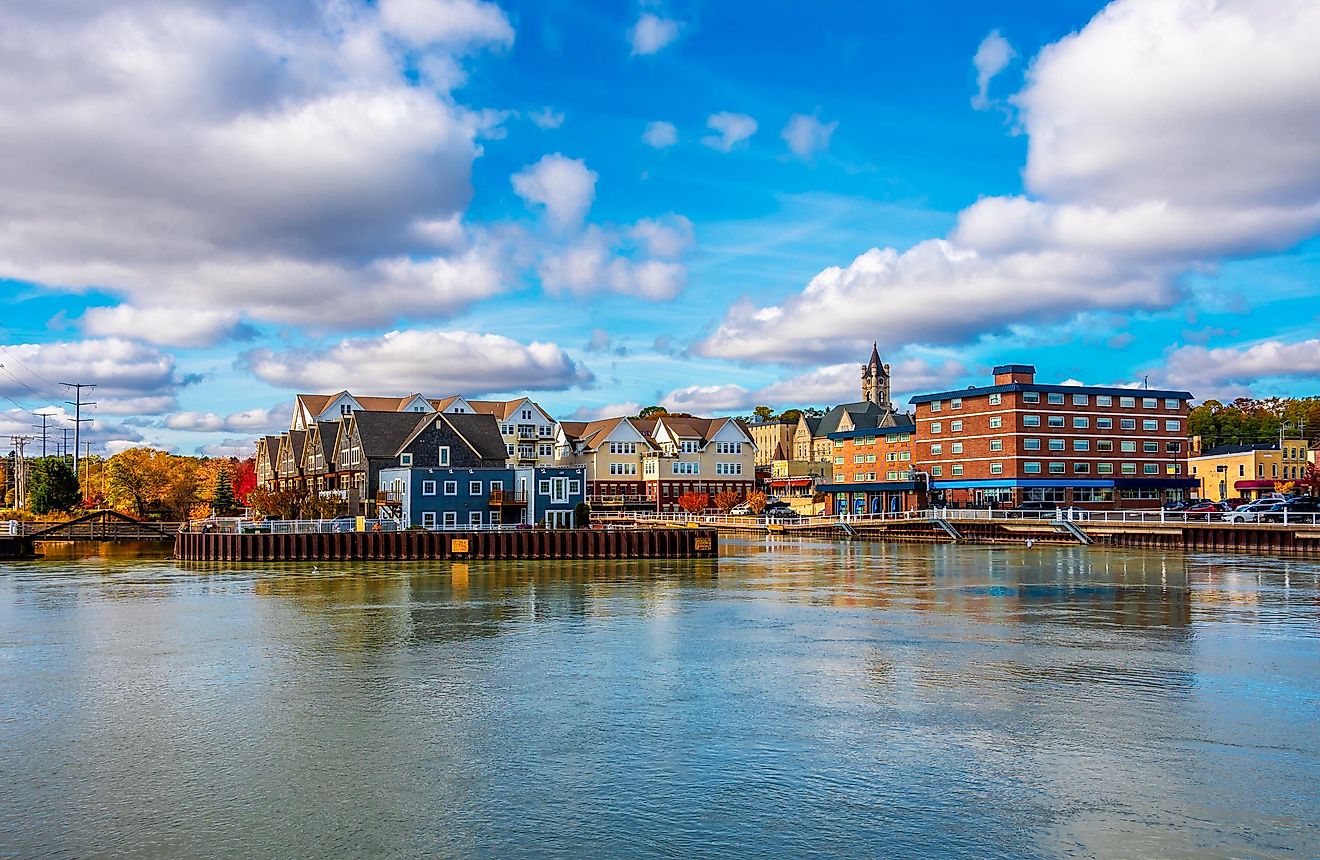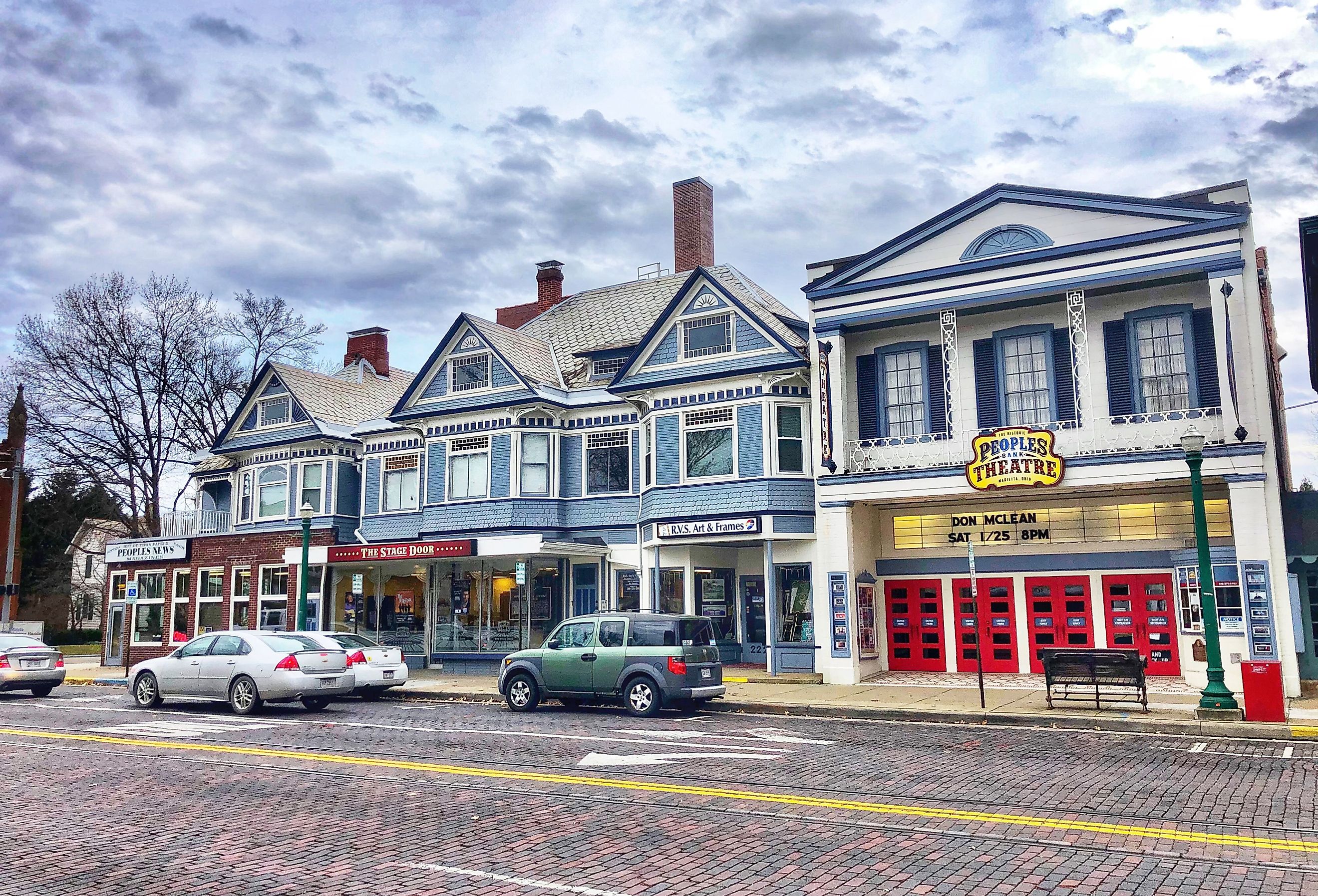
9 Must-See Historic Towns in Ohio
In 1803, Ohio became the 17th state to join the union. Since then, America's history has become infused with Ohio's fabrication. Historical landmarks scattered throughout the state remind visitors of the past—dawdle through the streets to admire Georgian, Federal, and Victorian-style architecture.
Stretch your legs while strolling through forests surrounded by buckeye trees for a quiet escape. Visit museums with artifacts and art from when Ohio was being developed.
Ohio's history welcomes visitors to explore these nine must-see historic towns in the Buckeye State, from riverboats to the underground railroad.
Marietta
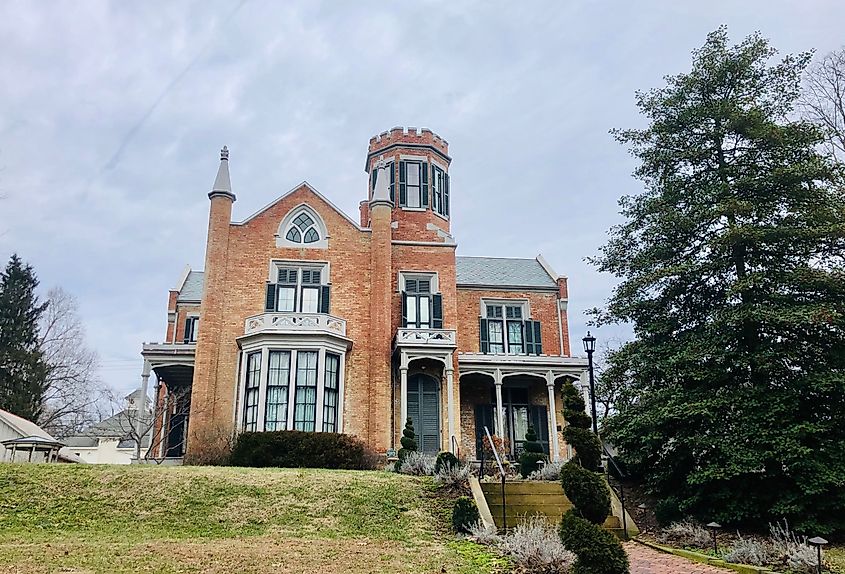
At the confluence of the Muskingum and Ohio Rivers is the town of Marietta, a historic riverboat town founded in 1788.
Visit elaborate mounds of the Marietta Earthworks are earth structures on the banks of the Muskingum River. Visitors can visit the only intact mound, the Conus, which has steps leading to the top where visitors can rest and admire the surrounding view.
High on the hill at the end of Putnam Avenue, is the Anchorage, a Marietta landmark since 1859. In 1996, the building was purchased by the Washington County Historical Society where it now welcomes visitors to tour the 23-room mansion.
Built in 1855, the Castle is a Victorian-style house listed on the National Register of Historic Places. A cobblestone path along a well-maintained garden leads to the front door, welcoming visitors to the home on guided tours.
For military historical education, visit the Campus Martius Museum, built in 1788. Tour the Rufus Putnam House and Ohio Company Land Office to explore featured exhibitions exploring the history of Marietta's Native inhabitants and early pioneers.
Book a room at the historic Lafayette Hotel to rest after a day of historical exploration, a historic landmark. The famous Marquis de Lafayette visited the hotel in 1892 before Marietta was an established town.
History afficionados will savor exploring the Campus Martius Museum, while architectural enthusiasts will be inspired by the Victorian-styled houses and brick-paved streets.
Sabina
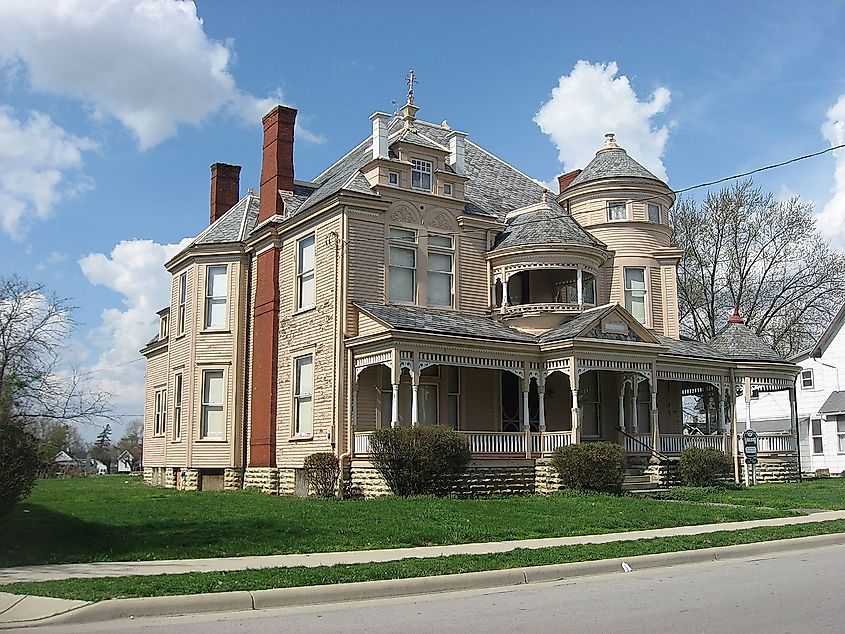
The town of Sabina was established in 1831 as a farming community and incorporated in 1859. Sabina has acquired the nickname, Eden of Ohio, for being quiet and family-friendly.
For military reflection, visit two sites listed on the Historical Marker Database. Visit the Sabina Veterans Memorial, a memorial dedicated to those who served in the Armed Forces of the United States of America. Afterward, head to the Sabina Municipal Building to visit the Lance Corporal Brett Wightman memorial marker, dedicated to a Marine Corps hero.
Drive on the historical Mark Road Bridge. Constructed in 1833 by the Wrought Iron Bridge Company, the 105-foot bridge was added to the National Register of Historic Places in 1990. In 2007, the bridge was rehabilitated and remains a single-lane structure.
After historical reflection, grab a bite to eat at one of many diners, such as Kim's Classic Diner, serving classic biscuits and gravy. If the day is sunny, take your food to go and have a picnic at Sabina Park under the shade of tall trees or in the comfort of a picnic shelter.
Delaware
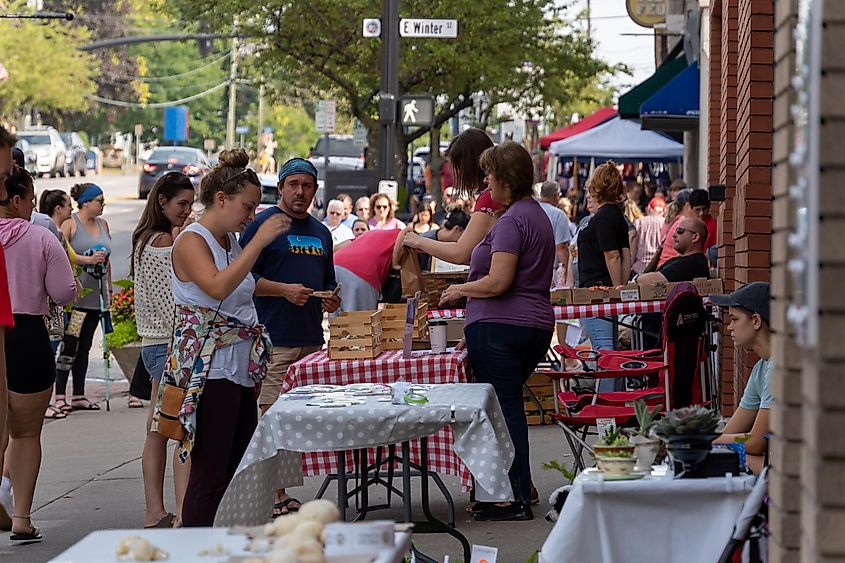
In the heart of Ohio, Delaware welcomes visitors to remember a time when slaves fought for their freedom.
Take a driving tour of the Underground Railroad beginning at Meeker Homestead Museum. The former house was built in 1823 and is now a museum dedicated to the education of Ohio's history. The driving tour is an outside look at now-private homes once used as stops along the Underground Railroad route in Delaware.
Stroll the campus of Ohio Wesleyan University, founded in 1842, to visit more than 60 buildings listed on the National Register of Historic Places. Begin with Elliott Hall, the oldest building on campus and the oldest collegiate Greek Revival building in Ohio.
Next visit Sturges Hall, a red-brick building that opened as a library in 1855. North of Sturges Hall is the massive stone structure of Slocum Hall, which opened in 1898. Sturges Hall contains a stunning leaded glass ceiling and glass portraits of history's famous people including, Abraham Lincoln and William Shakespeare.
Continue north of Sturges Hall to visit University Hall, home to the Gray Chapel with the nation’s largest Klais pipe organs. The 148-foot bell tower of University Hall inspired the title of Richard North Patterson’s thriller, “The Spire."
After wandering through campus, visit Downtown Delaware to shop for specialty cheese, olive oil, or novelties. Take a tour around the world to dine on pizza, sushi, or burgers to squash hunger.
Waynesville
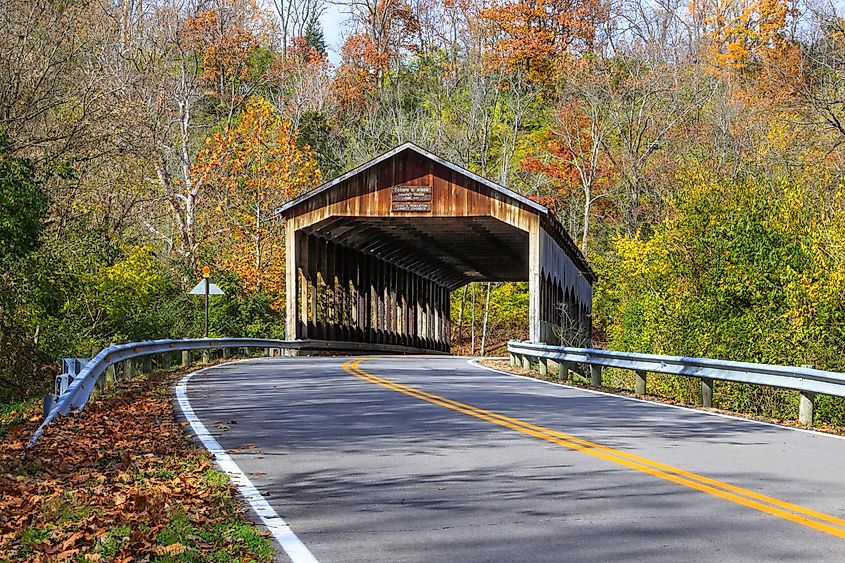
Founded in 1797, Waynesville is a historic town that is older than Ohio, with over 200 historic buildings. To explore the buildings of Waynesville, history buffs can print out a self-guided historic walking tour to learn about the origins of the buildings. Most buildings are on Main Street which is listed on the National Register of Historic Places.
Walk through Pioneer Village, a living museum of a group of historic buildings from the 19th century in Caesar Creek State Park. The buildings have since been relocated to create Pioneer Village. Visitors can participate in events held throughout the year, including Habitat for History, an event where volunteers help restore buildings in need of upkeep.
Visit the Museum at the Friends Home for additional tours, events, and education about Waynesville's history. The museum resides within a 1905 building that once was a boarding home until 1988. Within, the building houses permanent exhibits showcasing life in the 1800s.
Waynesville earned the name "Antiques Capital of the Midwest". Antiquers looking for the next great find will be delighted with many shops to explore. If visiting in October, be sure to attend the annual Sauerkraut Festival.
Loveland
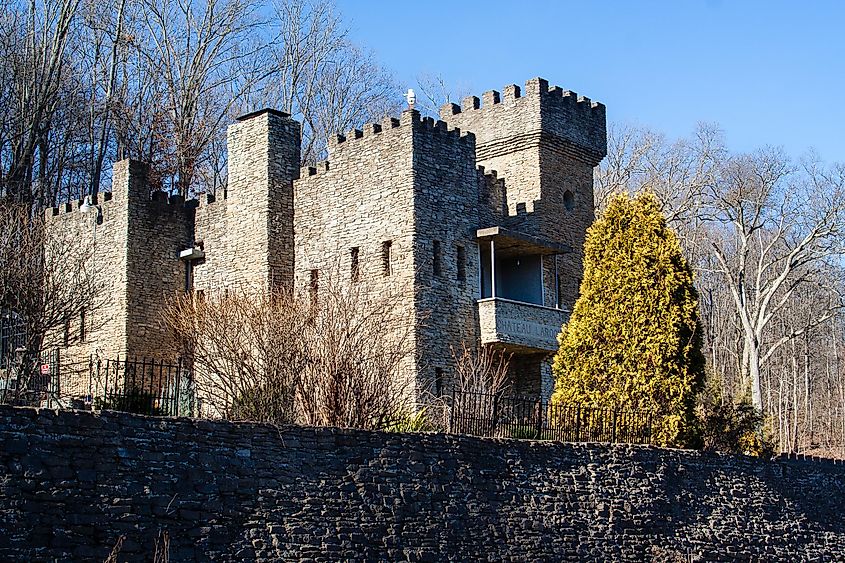
Loveland was established in 1881. Since then, Loveland has become a popular town for visitors to walk through history.
Loveland Castle is a 10th-century medieval-style castle built in 1929 built by Harry Delos Andrews. Visitors to the castle can take a tour of the grounds. If the weather is pleasant, have a picnic in the gardens.
After visiting the castle, learn about the lives of Ohio's pioneers and the changes that the Industrial Revolution brought to this early suburb. The Loveland Museum Center showcases permanent and rotating exhibits in a Victorian-style home from the 1800s.
Exhibits include the Bonaventure which features a Victorian-style parlor, bedrooms, and kitchen. The Stanton Brock Gallery, also located at the museum, houses a scale model of historic Loveland's train stations.
Get outdoors to walk, bike, or run along the Little Miami Scenic Trail. The trail is a former railroad from the 1800s, now the fourth longest paved path in the United States. Access the trail at Nisbet Park.
In addition to trails, Loveland is home to many parks. Parks include Phillips Park for outdoor recreation and Village Anniversary Park with a 125-year-old gazebo.
For a bite to eat, dine at the Paxton Grill. Named for the city's first postmaster, Thomas Paxton, the Paxton Grill continues to serve breakfast and lunch in the oldest building in Loveland.
The historic town of Loveland welcomes visitors to walk the grounds of a castle, stroll through historic parks, and dine in the oldest building in town.
Dennison
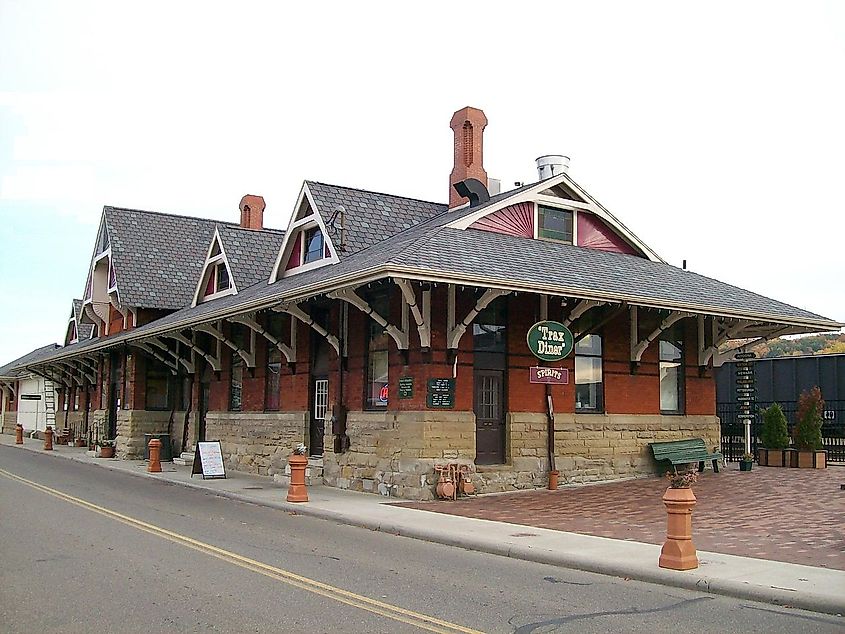
Dennison began as a railroad stop halfway between Pittsburgh and Columbus in the mid-1800s as a refilling station.
In 1978, the town's depot was designated as a National Historic Landmark and was restored in 1984 by volunteers. The depot welcomes visitors to roam the museum's railroad-related exhibits. In the museum's children's wing, children can climb a caboose and explore the engine house. Before leaving the depot, eat at The Over The Rail Diner, serving traditional American breakfasts and burgers.
Dennison is also home to the Railway Chapel. Completed in 1871, the Railway Chapel is the first church built in Dennison. Furniture for the church was constructed with materials from the railways. The church was added to the National Register of Historic Places in 2009.
Also listed on the National Register of Historic Places is the Presbyterian Manse, built in 1872. The three-story, brick home features French Empire architectural details.
After a historical adventure, take a walk or ride a bike along the Panhandle Trail. Replenish energy with Italian, Mexican, or Asian cuisine at a variety of chain pizza shops and fast food establishments.
Zoar
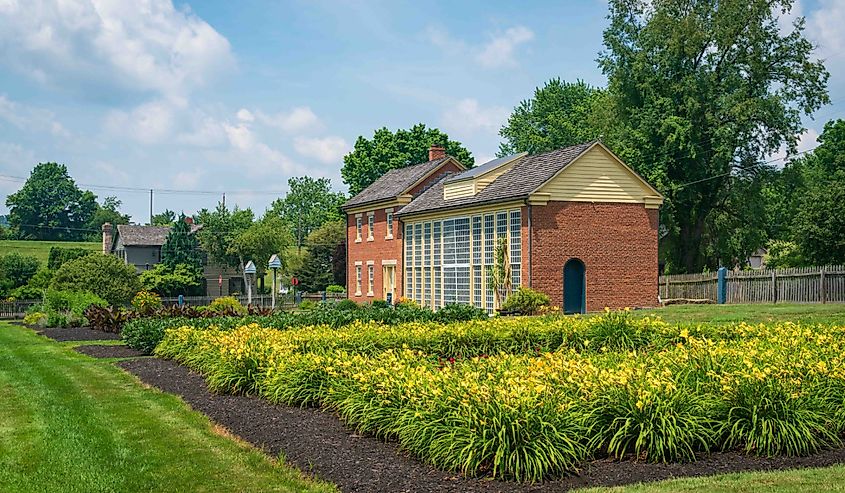
North of Dennison is the small town of Zoar, a historic German village founded by the Society of Separatists in 1817.
In 1969, the town was listed on the National Register of Historic Places and was designated a National Historic Landmark District in 2016. Zoar is home to more than 50 original well-preserved and restored historic structures and buildings open to the public.
Visit Historic Zoar Village where a national landmark brings history to life with tours led by costumed interpreters. In addition to tours, the Village offers classes for adults including blacksmith, needlepoint, and pretzel making. Additional events throughout the year include Zoar Maifest, a traditional German festival held in May, and Pie Day, a day celebrating Pi Day with delicious pies.
Visitors can stay at Zoar Gästehaus, lodging located within walking distance of the center of town.
While walking around town, walk by the Zoar Hotel, built in 1833, where President William McKinley was a frequent guest. Only the original structure remains which was used as a restaurant until closing to the public in 1983.
Completed in 1828, the Ohio and Erie Canal provides economic contributions to the village. The canal is part of the Ohio & Erie Canal National Heritage Corridor. Visitors can visit the historical marker and the Zoar Town Hall on Main Street.
Lebanon
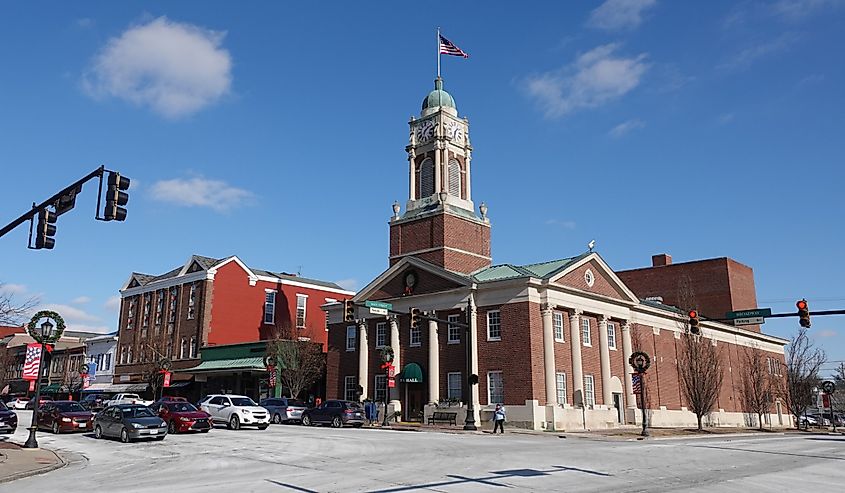
Since the American Revolution, travelers made the town of Lebanon their home. Many buildings in Lebanon have been listed on the National Register of Historic Places.
Visit The Black Horse Tavern, the first tavern, store, and courthouse in town since 1815. In 1940, the building was marked by the Daughters of the American Revolution as the oldest hotel in Ohio. The Black Horse Tavern continues to serve visitors as an inn and restaurant, The Golden Lamb.
Across from the Black Horse Tavern is the Carnegie Library, funded in 1903, by Andrew Carnegie. The library is a perfect example of Greek Revival architecture with classic ionic columns and pediment at the entrance. Carnegie Library is a historic building that continues to provide literature for Lebanon.
Art enthusiasts can experience the galleries of the Harmon Museum, often referred to as the Lebanon Museum. The building was funded by philanthropist, William Elmer Harmon in 1913, to serve as a recreational facility. The Harmon Museum's four floors boast a collection of art and artifacts from the 1800s.
Train enthusiasts can take a ride along in a historic diesel locomotive train with the Lebanon Mason Monroe Railroad. Beginning in Historic Downtown Lebanon, enthusiasts can learn about local history and railroad operations while riding through Southwestern Ohio in Warren County. Patrons can enjoy themed events throughout the year while riding the train.
Greenville
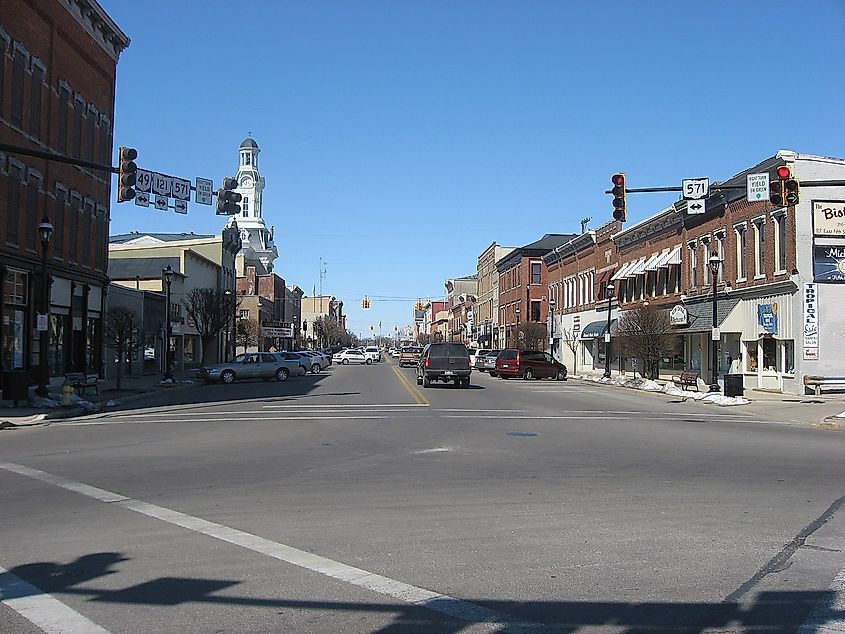
Greenville is the historic location of Fort Greene-Ville. It was also where the Treaty of Greenville was signed by General Anthony Wayne in 1795, opening up the Northwest for settlers.
Stop by the Fort Greene-Ville historical marker which honors the largest pioneer fort in Ohio. The marker was erected in 1930 by the Ohio Revolutionary Memorial Commission.
Visit the Garst Museum to view historical military artifacts. The museum spans over six buildings and includes shops showcasing merchants from history, a genealogy room, and a uniform floor. Visitors to the uniform floor will see an elaborate collection of soldiers' artifacts, weapons, and uniforms beginning with the Revolutionary War.
After the museum, visit Bear's Mill, a historically operating water mill built in 1849 by Gabriel Baer. Bear’s Mill was hand-constructed with timber beams and stands four stories high. Take a tour of the mill which is still in operation. In addition to tours, the Mill Gallery features exhibits displaying paintings, sculptures, photography, and pottery of local artists.
To Summarize
Towns in Ohio maintain history with interactive tours and educational exhibitions. Restored architectural landmarks throughout the state provide visitors with concrete visuals of the past.
From Victorian architecture to Greek Revival, the buildings played their parts in Ohio's history. Visitors to historic towns in Ohio can ride a historic train, visit a German town, or take a walk through military history.
These historical towns are more than collections of old buildings, they are living remnants that transport visitors to different chapters of Ohio, making learning an adventure.
